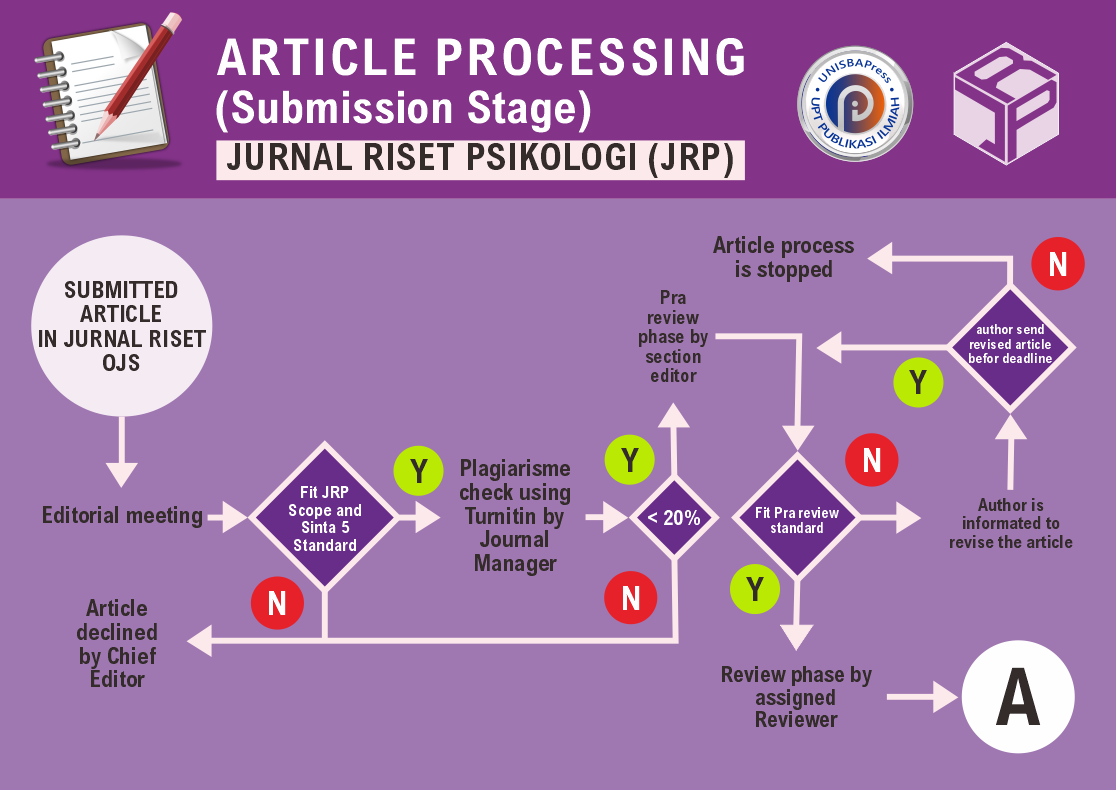Studi Deskriptif Pengguna Secondary Account Twitter di Indonesia
DOI:
https://doi.org/10.29313/jrp.v3i2.2765Keywords:
Social Media, Secondary Account, Uses & GratificationsAbstract
Abstract. High Internet usage coupled with the increasing use of social media in Indonesia is a phenomenon that needs to be understood thoroughly. Some users use multiple accounts (secondary accounts) when accessing social media. This study seeks to explain the phenomenon of Twitter secondary account usage in Indonesia. A total of 2414 samples were collected from across Indonesia. This study analyzed age, gender, number of secondary accounts used, place of residence, and motivation based on the usability and gratification paradigm. To measure motivation, the researcher used the "Motivation to Use Twitter" measurement tool which was adapted to the Indonesian language. This research is descriptive research with a quantitative approach. Descriptive statistical analysis techniques and Pearson's chi-square correlation were used to identify the relationship between motives and demographic characteristics.Twitter secondary account users in Indonesia are dominated by 18-24 year old females from Java Island who use two secondary accounts. An association was found between age and motivations for self-expression and distraction. Associations were also found between gender and self-expression, sociability and disruption motives. Finally, this study found associations between the number of secondary accounts used and self-expression and sociability motives.
Abstrak.
Penggunaan Internet yang tinggi dibarengi dengan meningkatnya penggunaan media sosial di Indonesia menjadi fenomena yang perlu dipahami secara menyeluruh. Beberapa pengguna menggunakan banyak akun (akun sekunder) saat mengakses media sosial. Penelitian ini berusaha untuk menjelaskan fenomena penggunaan secondary account Twitter di Indonesia Sebanyak 2414 sampel dikumpulkan dari seluruh Indonesia.Penelitian ini menganalisis usia, jenis kelamin, jumlah akun sekunder yang digunakan, tempat tinggal, dan motivasi berdasarkan paradigma kegunaan dan gratifikasi. Untuk mengukur motivasi peneliti menggunakan alat ukur “Motivasi Menggunakan Twitter” yang disesuaikan dengan bahasa Indonesia. Penelitian ini merupakan penelitian deskriptif dengan pendekatan kuantitatif. Teknik analisis statistik deskriptif dan korelasi chi-square Pearson digunakan untuk mengidentifikasi hubungan antara motif dan karakteristik demografi. Pengguna akun sekunder Twitter di Indonesia didominasi oleh perempuan berusia 18-24 tahun asal Pulau Jawa yang menggunakan dua akun sekunder. Terdapat hubungan antara usia dan motivasi untuk ekspresi diri dan gangguan. Asosiasi juga ditemukan antara gender dan ekspresi diri, kemampuan bersosialisasi dan motif gangguan. Terakhir, penelitian ini menemukan hubungan antara jumlah akun sekunder yang digunakan dan ekspresi diri serta motif bersosialisasi
References
APJII, Profil internet indonesia 2022. Jakarta : CSR Consulting, 2022.
D. J. Kuss and M. D. Griffiths, “Online Social Networking and Addiction—A Review of the Psychological Literature,” Int J Environ Res Public Health, vol. 8, no. 9, pp. 3528–3552, Aug. 2011, doi: 10.3390/ijerph8093528.
Statista, “Twitter: most users by country,” Statista.
E. Kross, P. Verduyn, G. Sheppes, C. K. Costello, J. Jonides, and O. Ybarra, “Social Media and Well-Being: Pitfalls, Progress, and Next Steps,” Trends Cogn Sci, vol. 25, no. 1, pp. 55–66, Jan. 2021, doi: 10.1016/j.tics.2020.10.005.
J. Errasti, I. Amigo, and M. Villadangos, “Emotional Uses of Facebook and Twitter: Its Relation With Empathy, Narcissism, and Self-Esteem in Adolescence,” Psychol Rep, vol. 120, no. 6, pp. 997–1018, Dec. 2017, doi: 10.1177/0033294117713496.
N. S. Hawi and M. Samaha, “The Relations Among Social Media Addiction, Self-Esteem, and Life Satisfaction in University Students,” Soc Sci Comput Rev, vol. 35, no. 5, pp. 576–586, Oct. 2017, doi: 10.1177/0894439316660340.
L. yi Lin et al., “ASSOCIATION BETWEEN SOCIAL MEDIA USE AND DEPRESSION AMONG U.S. YOUNG ADULTS,” Depress Anxiety, vol. 33, no. 4, pp. 323–331, Apr. 2016, doi: 10.1002/da.22466.
S. Ranaeiy, M. R. Taghavi, and M. A. Goodarzi, “The Effect of Loneliness on Social Networking Sites Use and Its Related Behaviors,” Glob J Health Sci, vol. 8, no. 8, p. 162, Dec. 2015, doi: 10.5539/gjhs.v8n8p162.
A. Suárez-Perdomo, Z. Ruiz-Alfonso, and Y. Garcés-Delgado, “Profiles of undergraduates’ networks addiction: Difference in academic procrastination and performance,” Comput Educ, vol. 181, p. 104459, May 2022, doi: 10.1016/j.compedu.2022.104459.
S. Lian, X. Sun, Z. Zhou, C. Fan, G. Niu, and Q. Liu, “Social networking site addiction and undergraduate students’ irrational procrastination: The mediating role of social networking site fatigue and the moderating role of effortful control,” PLoS One, vol. 13, no. 12, p. e0208162, Dec. 2018, doi: 10.1371/journal.pone.0208162.
D. Kuss and M. Griffiths, “Social Networking Sites and Addiction: Ten Lessons Learned,” Int J Environ Res Public Health, vol. 14, no. 3, p. 311, Mar. 2017, doi: 10.3390/ijerph14030311.
A. Mahmudan, “Survei: Generasi Z indonesia paling gandrung gunakan internet,” https://dataindonesia.id/digital/detail/survei-generasi-z-indonesia-paling-gandrung-gunakan-internet .
S. Pane and Z. Iskandar, “KETERBUKAAN DIRI PENGGUNA AKUN K-POP ROLEPLAYER TWITTER DI KOTA MEDAN,” KomunikA, vol. 14, no. 1, 2018.
M. R. Rakatirta and G. Ismail, “Perbedaan Aspek Self-Disclosure antara Pengguna Instagram dengan Satu Akun dan Lebih dari Satu Akun,” ResearchGate, 2017.
E. T. Panek, Y. Nardis, and S. Konrath, “Mirror or Megaphone?: How relationships between narcissism and social networking site use differ on Facebook and Twitter,” Comput Human Behav, vol. 29, no. 5, pp. 2004–2012, Sep. 2013, doi: 10.1016/j.chb.2013.04.012.
E.-J. Lee and S. Y. Oh, “Seek and You Shall Find? How Need for Orientation Moderates Knowledge Gain from Twitter Use,” Journal of Communication, vol. 63, no. 4, pp. 745–765, Aug. 2013, doi: 10.1111/jcom.12041.
M. Dindar and N. Dulkadir Yaman, “#IUseTwitterBecause: content analytic study of a trending topic in Twitter,” Information Technology & People, vol. 31, no. 1, pp. 256–277, Feb. 2018, doi: 10.1108/ITP-02-2017-0029.













